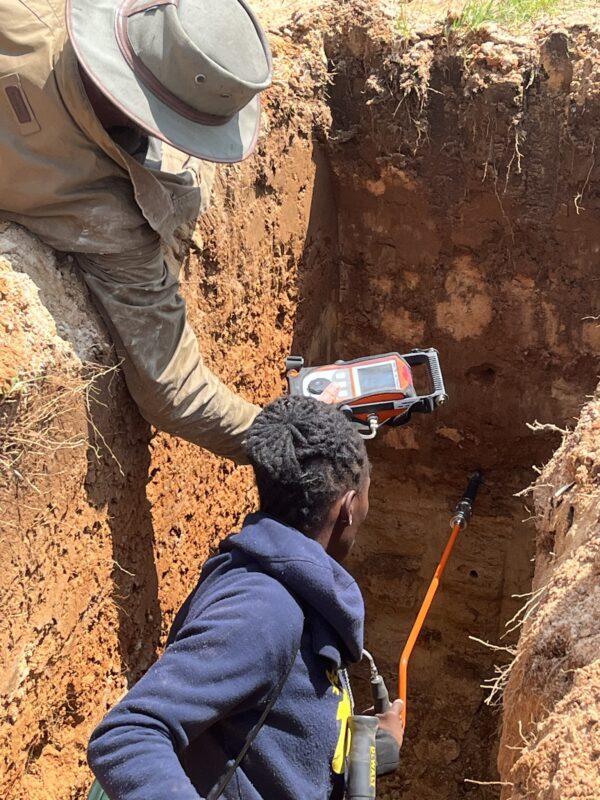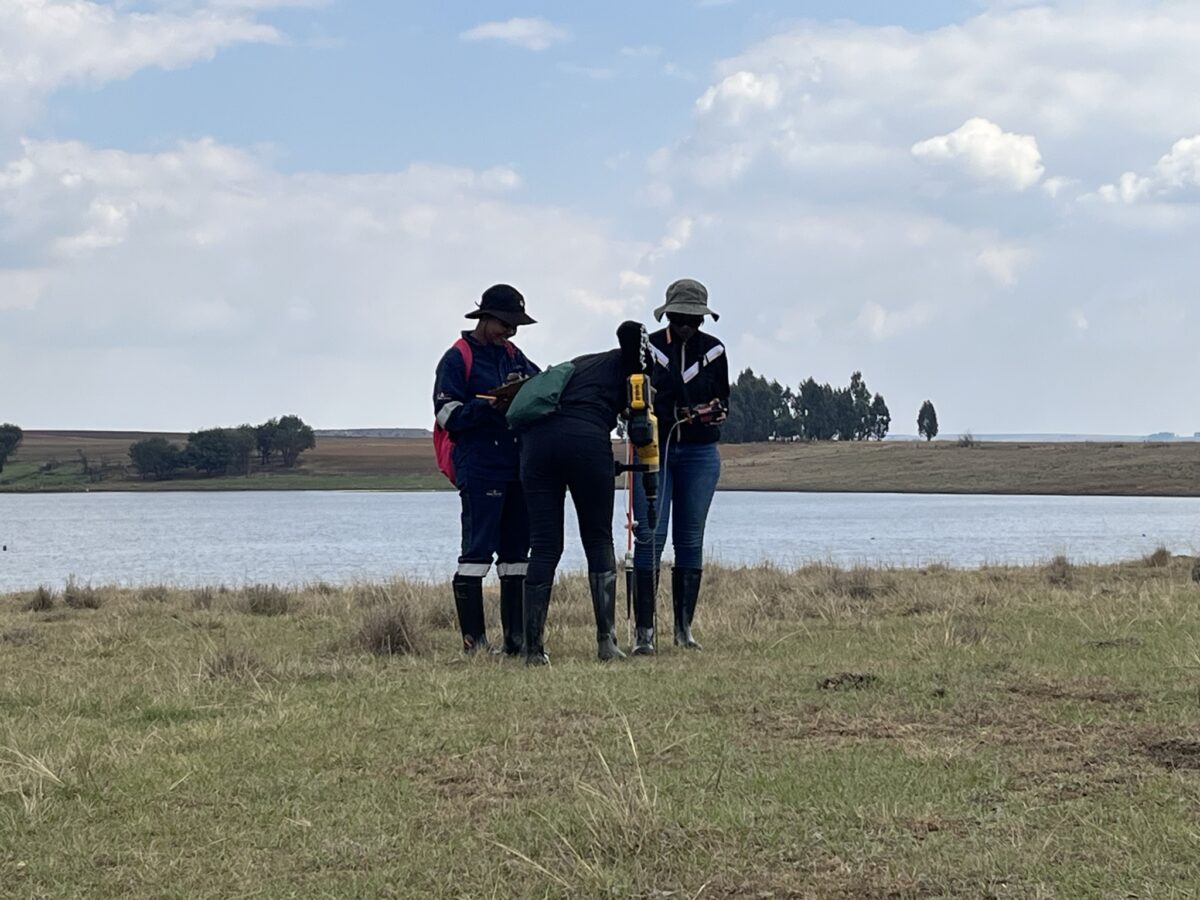The next three years will be central to gaining a better understanding of the potential of “natural” or “white” hydrogen resources. Several research projects are ongoing in Africa, North America, and Europe, with a network of researchers sharing information and data.
The HyAfrica project in South Africa focuses on the small-scale exploitation of local resources. The project, led by Prof. Adam Bumby, is currently in the process of identifying potential source sites. It will then work on quantifying estimated resources.
“There is no doubt that natural hydrogen forms by renewable natural geological process under the Earth's surface,” he told pv magazine. “However, the scale at which this production takes place has not been determined. So far, the only place where natural hydrogen is successfully exploited is a single hydrogen-bearing borehole in Mali, which runs a 30kW generator.”
Bumby said that not much effort has gone into the search for natural hydrogen until recent years. However, research activities could break this impasse.
“Our intention is to publish our findings in scientific journals and university dissertations, so the data will end-up in the public domain within the coming years,” he said.
The project falls under the LEAP-RE (Long-Term Joint European Union-African Union Research and Innovation Partnership on Renewable Energy) partnership. The HyAfrica consortium will receive funding until September 2025. Its findings should also be released by then.
Bumby said that the work is being carried out by the University of Pretoria and the University of Limpopo, whose funding is sourced from SANEDI – South African National Energy Development Institute. The other consortium members are the University of Evora (Portugal), the Leibniz Institute for Applied Geophysics (Germany), University of Mohammed Premier (Morocco), the University of Eduardo Mondlane (Mozambique), and the University of Lome (Togo), and the Fraunhofer Institute (Germany).
“Similar hydrogen exploration activities are also taking place on those three African countries undertaken by our consortium partners,” said Bumby, referring to projects in Morocco, Mozambique and Togo.
‘Natural' hydrogen
Current exploration activities in South Africa are still at a very early stage of development. Recent samples taken in Mpumalanga currently fall under the “natural” or “white” hydrogen category. Follow-up field trips and isotopic comparisons of all the hydrogen samples collected will provide a clearer understanding of the geological controls responsible for generating hydrogen in Mpumalanga, said the project members.
“We have measured numerous elevated levels of hydrogen throughout parts of Mpumalanga, but have not yet determined with geological source of that hydrogen, modeled the potential volume of hydrogen that might be produced, or researched how it could be exploited,” said Bumby. “With such preliminary data, it's difficult to predict if and when this research could be developed into producing electricity.”
“Our idea in the current project is to use it ‘onsite' (ie at the top of the hydrogen-bearing borehole) for small-scale electricity production,” Bumby said. “Hydrogen can be burned in a tuned piston engine, which can power a ~30kW generator.”
At the moment, the South African national hydrogen roadmap does not include natural/white hydrogen, so it is not considered a commodity. But the HyAfrica project aims to raise awareness among relevant stakeholders that natural hydrogen might be able to contribute in some way to the South African energy budget.
 Bumby said that “there are some similarities to natural gas exploration and hydrogen exploration, but a crucial difference is the mobility of these gases.”
Bumby said that “there are some similarities to natural gas exploration and hydrogen exploration, but a crucial difference is the mobility of these gases.”
Hydrogen is a tiny, buoyant molecule that moves more readily toward the surface, and it is likely that it is more difficult to trap under certain layers of strata than natural gas, because of this enhanced mobility, said Bumby.
“Natural gas exploration often focuses on identification of underground structures, such as arch-shaped anticlines developed in impermeable layers, that could concentrate hydrocarbons below the surface,” he said. “It is not yet known what geological strata and structures might be needed in order to trap appreciable amounts of natural hydrogen.”
Measurement activities are also different with respect to natural gas. The first stage of hydrogen exploration is made much easier by the mobility of hydrogen, said Bumby, adding that the current hydrogen exploration technology is less invasive than the one used to explore for and produce hydrocarbons.
“As hydrogen accumulations are more prone to leak to the surface than hydrocarbons, initial exploration is simply a matter of testing for hydrogen in surface soils, using quite simple, cheap equipment. A narrow (~15mm) shallow (~1m deep) hole is drilled in the soil, and a short probe connected to an industrial hydrogen meter is inserted into the hole,” said Bumby. “Typically hydrogen is only present in soils and in the atmosphere at a concentration of 0.5 ppm (part per million), so readings beyond that baseline value could be indicative of a leaky hydrogen reservoir at depth. More advanced exploration would involve drilling of much larger boreholes (similar in scale to those drilled to extract groundwater): several centimeters diameter and more than 100m deep, in order to try to intercept any trapped hydrogen below the surface. Certainly at this stage, hydrogen exploration is much less costly and disruptive than hydrocarbon exploration.”
This content is protected by copyright and may not be reused. If you want to cooperate with us and would like to reuse some of our content, please contact: editors@pv-magazine.com.



What a shame that the actual hydrogen content in “white hydrogen” tends to be around only 20% with the rest of it being mostly methane.
This is very good and promising initiative for the region. Hopefully natural hydrogen can be produced from some parts to the level of building local/community power plants for electricity production. Well done team in South Africa.
All sources of energy are welcomed
Charles Butcher wrote:
“All sources of energy are welcomed”
By whom? I personally do not welcome more fossil fuel extraction, camouflaged as hydrogen. I hope, my offspring still has a world to live in and fossil fuel burning is incompatible to this vision.